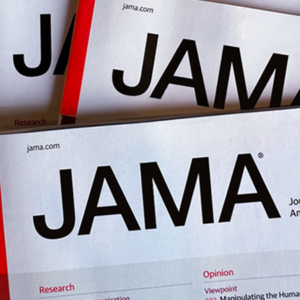פוסט זה זמין גם ב:
English
עברית
 Junichi Ishigami, MD, MPH1; Jeanne Charleston, RN1; Edgar R. Miller III, MD, PhD1,2; et alKunihiro Matsushita, MD, PhD1,2; Lawrence J. Appel, MD, MPH1,2; Tammy M. Brady, MD, PhD2
Junichi Ishigami, MD, MPH1; Jeanne Charleston, RN1; Edgar R. Miller III, MD, PhD1,2; et alKunihiro Matsushita, MD, PhD1,2; Lawrence J. Appel, MD, MPH1,2; Tammy M. Brady, MD, PhD2Key Points 
Question What is the effect of using a regular size blood pressure (BP) cuff regardless of an individual’s mid-upper arm circumference on BP readings when using an automated device?
Findings In this randomized crossover trial of 195 community-dwelling adults with a wide range of mid-arm circumferences, use of a regular BP cuff resulted in a 3.6–mm Hg lower systolic BP reading among individuals requiring a small BP cuff. In contrast, among individuals requiring a large or extra-large BP cuff, use of a regular BP cuff resulted in 4.8–mm Hg and 19.5–mm Hg higher systolic BP readings, respectively.
Meaning Using a regular BP cuff size for all individuals regardless of arm size resulted in strikingly inaccurate BP readings with an automated device; a renewed emphasis on individualized BP cuff selection is warranted, particularly in individuals with larger arm sizes.
Abstract
Importance Clinical practice guidelines recommend selecting an appropriately sized cuff based on mid-arm circumference prior to measuring blood pressure (BP). To our knowledge, the effect of miscuffing on BP measurement when using an automated BP device has not been quantified.
Objective To determine the effect of using a regular BP cuff vs an appropriately sized BP cuff on automated BP readings.
Design, Setting, and Participants This randomized crossover trial of community-dwelling adults with a wide range of mid-arm circumferences took place between March 16 and October 25, 2021, in Baltimore, Maryland. Participants were recruited via BP screening events at a public food market and a senior housing facility, targeted mailings to prior research participants, placement of study brochures in hypertension clinics at Johns Hopkins University, and referrals from physicians providing hypertension care to adults.
Interventions Participants underwent 4 sets of triplicate BP measurements, with the initial 3 sets using an appropriate, too-small, or too-large BP cuff in random order; the fourth set of triplicate measurements was always completed with an appropriate BP cuff.
Main Outcomes and Measures The primary outcome was the difference in mean BP when measured with a regular BP cuff compared with an appropriate BP cuff. The secondary outcome was the difference in BP when using too-small or too-large BP cuffs vs an appropriate BP cuff across all cuff sizes. Results were also stratified by systolic BP (≥130 mm Hg vs <130 mm Hg) and body mass index (calculated as weight in kilograms divided by height in meters squared; ≥30 vs <30).
Results A total of 195 adults (mean [SD] age, 54 [16] years; 67 [34%] male; 132 [68%] Black; 100 [51%] with hypertension) were randomized for inclusion. Among individuals requiring a small BP cuff, use of a regular BP cuff resulted in a statistically significant lower BP reading (mean systolic BP difference, −3.6 [95% CI, −5.6 to −1.7] mm Hg). In contrast, among individuals requiring a large or extra-large BP cuff, use of a regular BP cuff resulted in a statistically significant higher BP reading (mean systolic BP difference, 4.8 [95% CI, 3.0-6.6] mm Hg and 19.5 [95% CI, 16.1-22.9] mm Hg, respectively). For the secondary outcome, BP differences with overcuffing and undercuffing by 1 and 2 cuff sizes were greater among those requiring larger BP cuffs. The results were consistent in stratified analyses by systolic BP and body mass index.
Conclusions and Relevance In this randomized crossover trial, miscuffing resulted in strikingly inaccurate BP measurements. This is particularly concerning for settings where 1 regular BP cuff size is routinely used in all individuals, regardless of arm size. A renewed emphasis on individualized BP cuff selection is warranted.








